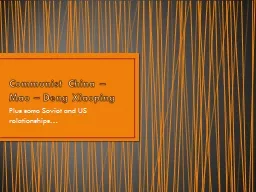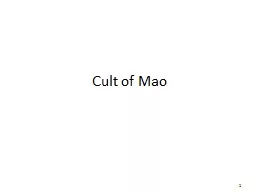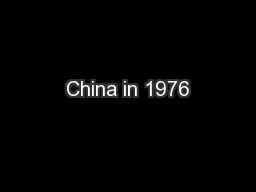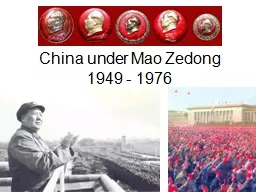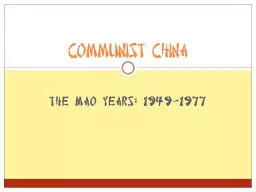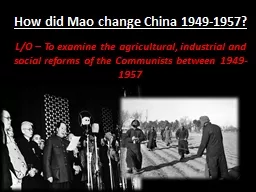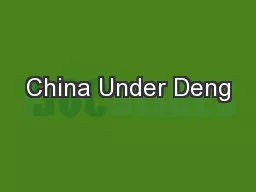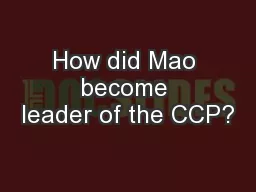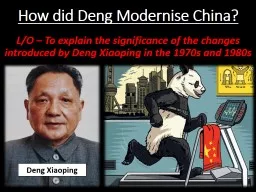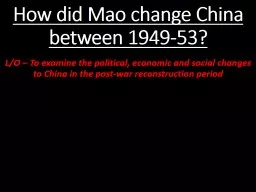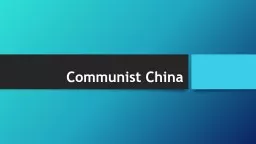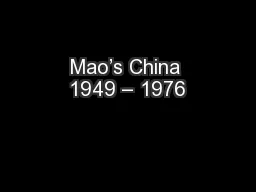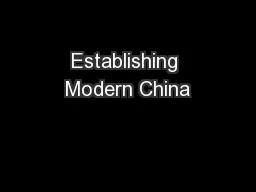PPT-Communist China – Mao – Deng Xiaoping
Author : pamella-moone | Published Date : 2018-02-24
Plus some Soviet and US relationships Two Chinas 1949 PRC Mainland Republic of China Taiwan Taiwan holds legal status and UN recognition until 1979 Carter Communist
Presentation Embed Code
Download Presentation
Download Presentation The PPT/PDF document "Communist China – Mao – Deng Xiaopin..." is the property of its rightful owner. Permission is granted to download and print the materials on this website for personal, non-commercial use only, and to display it on your personal computer provided you do not modify the materials and that you retain all copyright notices contained in the materials. By downloading content from our website, you accept the terms of this agreement.
Communist China – Mao – Deng Xiaoping: Transcript
Download Rules Of Document
"Communist China – Mao – Deng Xiaoping"The content belongs to its owner. You may download and print it for personal use, without modification, and keep all copyright notices. By downloading, you agree to these terms.
Related Documents

